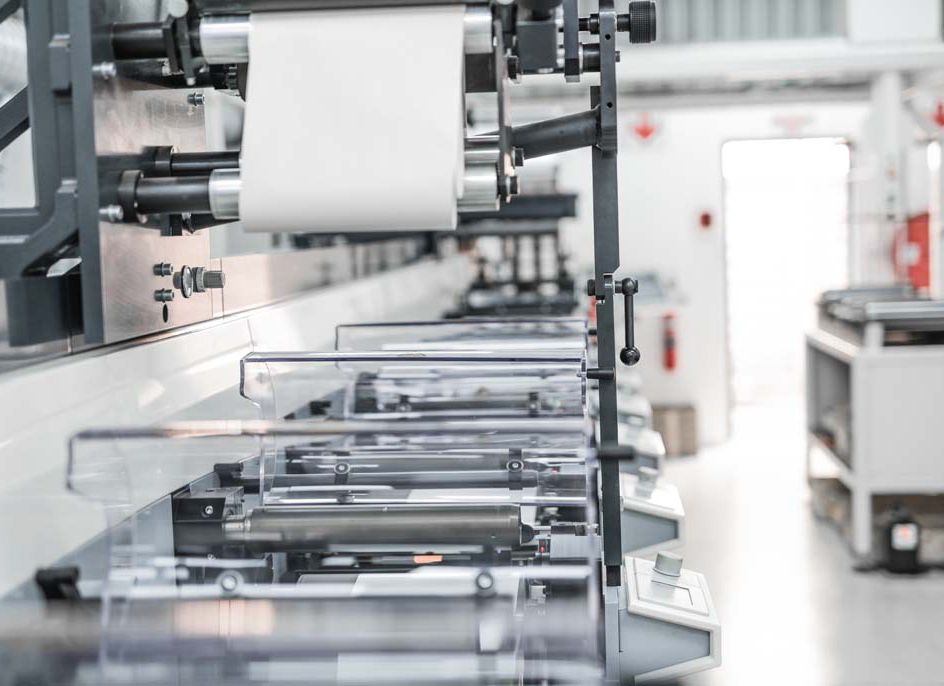Report: Global Print During COVID-19
Article • February 2, 2021 • 7 min read
Booming photo personalization, Amazonization of the printing industry, and tracked delivery are shaping the digital printing industry, according to Cloudprinter.com COVID-19 report

The New Reality of the Global Print Industry
Booming photo personalization, Amazonization of the printing industry, and tracked delivery are shaping the digital printing industry, according to Cloudprinter.com COVID-19 report
It’s been more than a year since the COVID-19 started to spread around the globe. The unprecedented measures have caused a crisis and thrown the world into disarray. Many industries collapsed and are hurting while others are doing remarkably well. Having both, printing and e-commerce industries at our core, Cloudprinter.com has witnessed both tendencies developing simultaneously and prepared this report to summarize the coronavirus impact in 2020 — the beginning of 2021.
Brick and mortar businesses were forced to change their business models and either adapt to novel conditions or die. At the same time, the majority of online ones started to thrive effortlessly implementing some improvements only to increase their efficiency – serve more customers and process more orders. Amazon, for example, hired 427,300 additional employees to meet the growing demand and expected to exceed $100 billion in quarterly revenue for the first time ever in the fourth quarter, according to analysts surveyed by FactSet.
What is clear is that the e-commerce industry has changed virtually overnight:
• 10 years’ growth in 3 months in the US, according to McKinsey&Co.
• During the quarantine, 75% of US consumers have tried different stores, websites, or brands with a retention rate of 80% (consumers who are planning to integrate new brands into their post-pandemic lives).
• Online delivery volume increased by the same amount in 8 weeks as it had over the entire previous decade.
As a platform enabling digital printing and providing print automation solutions for e-commerce, in our material, we couldn’t omit these factors too.
COVID-19 and Printing Industry
A mixed situation has developed in the digital printing industry – while the photo personalization field was benefiting from the fact that their customers were limited in ways of spending money, some spheres serving, for example, HoReCa and travel-related industries experienced a considerable decline in printing needs.
Thus, it’s hard to tell that the print sector has smoothly grown throughout the quarantine, as this growth has been distributed unevenly — some businesses printed more than usual, while the others stopped ordering prints at all.
In the light of the quarantine, many businesses have also shifted to remote working which for sure accelerated the trend towards paperless operations from a business perspective (significantly fewer orders for envelopes, business cards, letterheads, folders, etc. were made). But being locked in their homes, people started looking for ways to spend money online.
While most offline stores were experiencing no foot traffic, the online ones called the lockdown period a Big Christmas. Concerning photo book printing services or canvas/Forex print companies, the holiday season usually brings 80% of sales and in 2020 this period has expanded from the spring till October with a slight drop during the summer and a massive boost in November — December.
Another factor to be taken into account are closed borders and national lockdowns. Due to them, global distribution channels were disrupted while demand remained the same and even grew. Chinese lockdown, e.g., has impacted the publishing business a lot as the supply chain had been broken and booksellers basically couldn’t restock.
When you aren’t able to print abroad inexpensively and deliver it or preselected print houses are shutting down due to coronavirus outbreaks, local automated printing with orders being routed by the smart algorithms is quite a solution. As a result, domestic markets, producers, and vendors gain an advantage over foreign competitors, as they now cover the lion's share of country-wide print needs.
In our case, the pre-holiday period has shown similar tendencies. Clients started looking for new fulfilment and delivery options due to coronavirus spikes that resulted in partial lockdowns or their vendors being shut down for quarantine.
Cloudprinter.com Market Analysis
From a total of 1.3 million orders processed via our platform over the specified period, we've dissected more than 65,000 random print orders to have them analyzed in our COVID-19 report.
Today we have to accept the fact that no one knows how and when it’s going to end. The timeline is hazy and the messages about the third wave of the pandemic are spreading around. In these circumstances, only the lazy haven’t talked about the crisis impact or current and potential losses.
We chose another way and analyzed the print orders received and fulfilled in a period from March 2020 to January 2021 as we believe that future projections can only be made based on analyzable and decomposable data.
As a global printing platform connecting print buyers and print houses all over the world,
Cloudprinter.com has its own vision of the situation built on our extensive data collected during this unprecedented period and compared to the same time last year.
As we see, the coronavirus situation hasn’t become an obstacle for our users from European countries on their way to fulfilling print needs. Although countries like Germany, Italy, and France became an epicentre of the pandemic in the EU during the spring, they took 2nd, 3rd, and 6th places respectively totalling over 32% of all orders.
Over the analyzed period, the US, India, the UK, and Malaysia were under strict lockdowns with slight relaxations, meaning e-commerce marketers and enterprise businesses were looking for ways to have their orders executed.
Compared to autumn 2019, the geography of orders doesn’t look much different – with the Netherlands and Belgium taking the leading positions and the US, Germany, and France following.
The Most Popular Print Products
If we get away from countries and focus on the products, we see significant growth in the photo personalization category. But regardless of that, corporate orders show a tendency towards steady growth starting from June.
Photo personalization products such as photo tiles, photo books, and posters made 86.45% of all orders over the pandemic period with 46.81%, 37.57%, and 2.07% respectively.
This tendency can be easily explained by the following lockdown factors:
• People got more time to arrange their trips down memory lanes and started ordering more photo books.
• Being locked at home, people started to think more about interior (re)decoration and strived to make their homes cosier.
• During the lockdown, except online shopping, there were not that many options to spend money.
It’s obvious that corporate print orders are in the minority – only 13.55% of the orders were addressing the business needs. But even if we compare the number of orders to the similar period of 2019 (e.g. September), we witness the trend of businesses moving towards optimization and automation of print ordering.
The demand for such product categories as business cards and folded cards increased starting from the beginning of summer, after the quarantine restrictions were lifted. And this is the moment when we started to notice even more conservative companies looking for automated and most-contactless solutions to have their needs satisfied.
The demand for such print products as customized packaging, promotional products, and labels/stickers has been increasing steadily during the Covid-19 pandemic. Currently, Cloudprinter.com is adding these products to the catalogue to make sure our clients can print highly-demanded products all over the world.
Order Volumes and Values
Although the range of products is really wide and exceeds 5000+ options, the customers tend to avoid ordering multiple products in one order and stick to one (more seldom two) items. The only significant exception was in October 2020 when the average number of items per order reached 5.
This increase is most likely caused by two factors. Firstly, the upcoming holiday season activity: both corporate and commercial buyers were starting ordering gifts and souvenirs (e.g. in addition to usual corporate print products, the growth in orders of calendars was seen). Secondly, the autumn became a period when the corporate sector started recovering from the consequences of the pandemic: many businesses adapted to the new reality and transformed – this is very well proved by the growth in orders of business cards and brochures over the season.
Average number of items per order, March 2020-January 2021
While finding out the numbers of copies/items in order, we also needed to split the orders into two categories (corporate and commercial). Commercial orders (excluding wall art – canvases, photo tiles) in the majority of cases, consist simply of 1 piece. With wall art, these numbers increase up to 5 pieces.
Average number of copies in a corporate order, March 2020-January 2021
With the business orders, the approach is different, as corporate orders usually presuppose a large number of copies. The average number is 861 pieces with, for example, on average 2050 copies in the order of flyers and 645-650 copies in business card and folder orders.
When talking about the order value evolution, the tendency seems to be pretty typical. With the platform growth and print network expansion, the average order value reduces as it is inversely proportional to the volumes: the more we print, the lower the price of an order is.
Several reasons are explaining this: a higher number of print partners implies orders to be printed even more locally. This results in better and more competitive prices from print houses. Also, the shipping distance is shortening, lowering the delivery cost.
Across this unprecedented period, the average monthly order values were typically fluctuating only slightly (€13.10-13.80) amounting to €13.82 (excl. VAT) on average per order over the analyzed period.
When looking at the whole period, the tendency for an average order value to decline is pretty clear: starting with €16.96 in March 2020 and ending with €8.15 in January 2021.
This aspect is to be elaborated furtherly in our next report analyzing the year of working under COVID-19 caused lockdowns and restrictions.
Delivery Options
As we’ve already mentioned, delivery has become a big deal nowadays as well. Consumers get everything delivered and pay much more attention to the shipping methods: what are the prices and whether parcels are trackable or not.
Therefore, we’ve analyzed the delivery options chosen by Cloudprinter.com users to receive their orders. In the ‘deliver-everything-era’, the majority of consumers choose trackable delivery, as they want to receive real-time updates and have the possibility to check the status of their package any moment.
In contrast to the untrackable option, all trackable ones total up to 90% on average over the quarantine.
In addition to standard delivery (39.94%), Cloudprinter.com Enterprise plan subscribers are given a possibility to choose one of the delivery services they already use which automatically implies order tracking (50.66%). This totals 90.6% print product customers willing to have their order tracked.
As we see, the tendency for tracking is constantly increasing over the analyzed period, while the demand for untracked options remains stable with basically no growth. This means that the more consumers order, the more they tend to control and track – to simply save their time and satisfy the impatience.
Printing Presses
Another angle of the analysis is the equipment. Within Cloudprinter.com global print network connecting 170+ print partners worldwide, HP is an undisputed leader among printing presses used for order fulfilment. With two-thirds of orders printed on the company’s machines (Indigo, DesignJet, Latex, PageWide models), HP is way ahead of the closest competitor Canon (varioPRINT, imagePRESS, Colorado, Arizona models) that receives about 25% of print jobs. The machines from other brands (Xerox, Generic, Kodak, Fujifilm, Ricoh, Mimaki) were used in 6.5% of orders.
Bottom Line
It would be presumptuous to make strong statements about the post-corona period as we don’t know when it will end, but here are our 4 conclusions based on the analysis results:
1. Both global e-commerce stats same as Cloudprinter.com data show the similar: the coronavirus crisis is likely to accelerate existing industry trends. It means that the field of online purchases and delivery will grow continuously – no matter are those corporate orders or individual.
2. From the vendor’s perspective, order processing automation is sought-after. The demand for highly automated and fully integrated workflow systems is growing as consumers are expecting the Amazonization of the whole e-commerce industry. This tendency forces all marketers to speed up.
3. Automation is becoming crucial, both on equipment and workflow levels. Highly skilled engineers can’t be replaced quickly. Easy-to-operate systems requiring fewer skills make it easier to find or replace operators.
4. Going back to the typical model of making business may be a long way off and no one can predict when the borders will open again. Instead of waiting and hoping for the better, Cloudprinter.com clients choose to transform to meet their customers and business needs.


